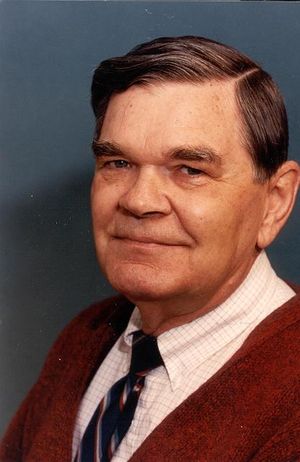John L. Moll
John L. Moll
John Louis Moll was born 21 December 1921, in Wauseon, Ohio. He obtained the B.Sc. in Physics and the Ph.D. in Electrical Engineering from The Ohio State University in 1943 and 1952, respectively. He was a staff member at the RCA Labs, Lancaster, PA, from 1944 to 1945.
As a member of Technical Staff at the Bell Telephone Laboratories (BTL) between 1952 and 1958, Moll carried out research and development of silicon devices. This was the period of time when the management goal at BTL was the invention of a new technology to replace the vacuum tubes and relays in the telephone central offices.Moll was involved with many of the efforts to reach this goal. These included the modeling of the solid-state switches, and identification of Silicon (in preference to Germanium) as the most appropriate available semiconductor technology.
The Ebers-Moll transistor model, and the theory of the p-n-p-n switch came from this effort. Much of the early silicon technology originated in Moll's group.This included device development using diffusion, oxide masking, the discovery of gettering, and appropriate metallurgy to contact semiconductor regions.
At Stanford University, Moll was Associate Professor and then Professor of Electrical Engineering from 1958 to 1970.With his students, he carried out research on the physics of Silicon devices, Silicon MOS devices, and III-V materials and devices; the theory and demonstration of the MOS diode; and theory the (long channel) MOS transistor.The theory of the "step-recovery diode" was a result of his consulting at Hewlett-Packard.
At Fairchild Camera and Instrument Company, from 1970 to 1974, Moll was responsible for the development of a variety of opto-electronic devices.The presently used "stretched bar" LED was invented at this time.
At the Hewlett-Packard Company, Moll has managed technology development and device modeling for bipolar and MOS Silicon devices and circuits from 1974 until 1987.From 1987 to 1990, he helped to start anew laboratory to do research and development of High Temperature Superconductor materials and devices.
Moll is author or co-author of several books on semiconductor device physics and modeling; recipient of Guggenheim Fellowship, 1964; Howard N. Potts Medal, Franklin Institute, 1967; the Ebers Award, IEEE Electron Devices Society, 1971; the Benjamin Lamme Medal, Ohio State University, 1988.Moll received the IEEE Edison Medal in 1991, "for pioneering contributions to diffused and oxide-masked silicon devices, transistor analysis, the p-n-p-n switch, and optoelectronics." He is a Fellow of the IEEE; member of the American Physical Society; the National Academy of Engineering; and the National Academy of Sciences.
